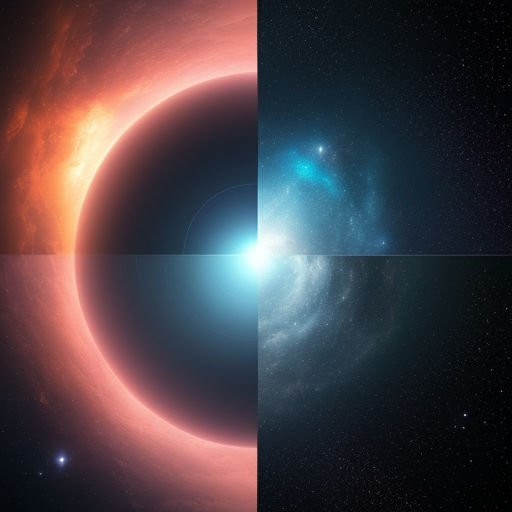Blast Off Into the Unknown Where No Human Has Gone Before
Venturing into the Unknown: The Allure of Deep Space in The First Spaceship on Venus
The mysterious vastness of deep space has fascinated humanity for centuries, inspiring countless stories of exploration and adventure. Among these cosmic tales, the 1960 film The First Spaceship on Venus stands out as a pioneering vision of interplanetary travel. This cinematic journey into the depths of space not only showcases the technological imagination of its era but also captures timeless themes about human curiosity and the unknown. As we revisit this classic, we’ll explore how it portrays deep space exploration, its cultural significance, and surprising trivia that even avid sci-fi fans might not know.
Charting a Course: The Storyline and Deep Space Ambition
At its core, The First Spaceship on Venus is a gripping narrative about humanity’s first manned mission beyond Earth, aimed at uncovering secrets hidden in the furthest corners of our solar system. The story begins with a startling discovery: an unidentified object hurtling towards Earth. This mystery sparks an international coalition to launch an expedition into deep space, targeting Venus — then imagined as a potentially habitable planet.
A Tale Set Against the Cold War Era
Produced during the height of the Cold War, the film poignantly reflects the period’s zeitgeist. Despite political tensions, the mission unites scientists and astronauts from various countries, emphasizing the hopeful ideal that deep space exploration transcends earthly conflicts. This message remains inspiring today, suggesting that our shared quest for knowledge can bridge even the deepest divides.
Key Plot Highlights
– Discovery of a strange artifact emitting signals in deep space
– Assembly of an international crew for the historic Venus mission
– Encounter with signs of an ancient alien civilization
– Ethical dilemmas arising from contact with extraterrestrial life
These elements combine to create a suspenseful adventure that intertwines scientific inquiry with ethical questions—an approach that was ahead of its time.
Visualizing Deep Space: Special Effects and Set Design That Captivated Audiences
For viewers in 1960, The First Spaceship on Venus delivered an impressive visual experience, particularly its depiction of deep space environments and alien landscapes. The film’s production team employed innovative techniques to simulate the vastness and mystery of space flight, influencing many later sci-fi productions.
Practical Effects that Pushed Boundaries
Unlike modern CGI, the movie relied on practical effects such as miniatures, matte paintings, and creative lighting to bring deep space to life. Some noteworthy techniques include:
– Detailed spaceship models that conveyed a sense of scale
– Use of stark contrasts between light and shadow to mimic cosmic voids
– Realistic portrayals of astronauts’ space suits and zero-gravity movement
These efforts helped immerse audiences, allowing them to experience the scientist’s awe and trepidation amidst unknown stellar phenomena.
Influence on Subsequent Space Films
The visual storytelling techniques of The First Spaceship on Venus paved the way for later iconic movies like 2001: A Space Odyssey and Alien. By prioritizing authenticity and atmosphere, it positioned deep space not as an abstract backdrop but as a character in its own right—mysterious, beautiful, and sometimes threatening.
Behind the Scenes: Unique Production Insights and Trivia
Delving deeper into the making of the film reveals fascinating details that enrich our understanding of its legacy.
A Collaborative East-West Effort
Interestingly, The First Spaceship on Venus was a co-production between East Germany and Poland, countries with limited exposure to Hollywood science fiction. This partnership was a bold move that illustrated deep space as a unifying theme beyond geopolitical blocs. The original script was based on Stanisław Lem’s novel, a renowned Polish science fiction writer whose work would later inspire numerous adaptations.
Scientific Consultation and Accuracy
The filmmakers consulted astronomers and physicists to ground their depictions of space travel in realism. While some concepts, like the depiction of Venus as a hospitable world, were later disproved, the effort reflected an earnest commitment to scientific plausibility—a rarity for sci-fi cinema at the time.
Did You Know? Lesser-Known Facts
– The spaceship design was inspired by real experimental rockets from the 1950s.
– The atmospheric scenes of Venus were filmed using colored fog and innovative lighting filters.
– Several crew members portrayed by actors were scientists or engineers to lend authenticity.
These details underscore the film’s unique blend of creativity and technical respect.
Deep Space Themes Explored: Beyond Adventure to Reflection
Beyond its thrilling storyline, The First Spaceship on Venus delves into profound themes that continue to resonate in discussions about space exploration.
The Quest for Knowledge vs. The Perils of the Unknown
The film highlights humanity’s insatiable curiosity as a driving force, balanced against the risks inherent in deep space travel. It asks whether the pursuit of alien knowledge justifies potential danger—a debate still relevant as we contemplate missions to Mars and beyond.
Unity and Conflict on a Cosmic Scale
The international crew symbolizes hope for cooperative exploration. Yet, the film does not shy away from interpersonal tensions and ideological clashes, mirroring real-world challenges of collaboration in deep space endeavors. This nuance adds depth to the narrative, making it more than mere spectacle.
Environmental and Ethical Considerations
Encounters with remnants of alien civilizations raise questions about the responsibility humans bear when disturbing other worlds. This foresight anticipates modern discussions on planetary protection policies designed to prevent contamination.
Legacy and Modern Relevance of The First Spaceship on Venus
Over six decades since its release, The First Spaceship on Venus remains a noteworthy artifact in space exploration media, with lessons holding fresh relevance.
Prescient Vision of Deep Space Exploration
Although future space missions would upend many of its scientific assumptions, the film’s core message—embracing the unknown with curiosity and caution—holds true. With renewed interest in crewed deep space missions, including proposed journeys to Venus, its narrative echoes contemporary ambitions.
Impact on Popular Culture and Science Inspiration
The film influenced not only filmmakers but also generations of scientists and dreamers who saw deep space as a frontier worth exploring. It helped shift public perception, depicting space travel as an attainable and noble human endeavor rather than mere fantasy.
Where to Watch and Learn More
For readers interested in viewing this classic or exploring its background further:
– The First Spaceship on Venus is available for streaming on select platforms specializing in classic sci-fi.
– Stanisław Lem’s original novel, “The Astronauts,” offers a deeper dive into the story’s source material.
– [NASA’s deep space exploration page](https://www.nasa.gov/topics/deep-space-exploration) provides updates on real missions inspired by such pioneering visions.
Rediscovering the Wonders of Deep Space
The First Spaceship on Venus remains a compelling blend of science fiction, adventure, and philosophical inquiry. Its portrayal of deep space as a vast, enigmatic realm invites audiences to reflect on humanity’s place in the cosmos. Revisiting it today encourages us to appreciate the bold imagination and spirit of cooperation essential for unlocking the secrets of the stars. As we continue to push the boundaries of exploration, this timeless film reminds us that deep space is not just a setting but a grand journey—one that challenges, inspires, and unites us across generations.
If this cosmic voyage piqued your curiosity, dive deeper into the world of early space exploration films or join local astronomy groups to witness the wonders of the night sky firsthand. The universe is waiting—so why not take the first step toward your own adventure into deep space?














Post Comment